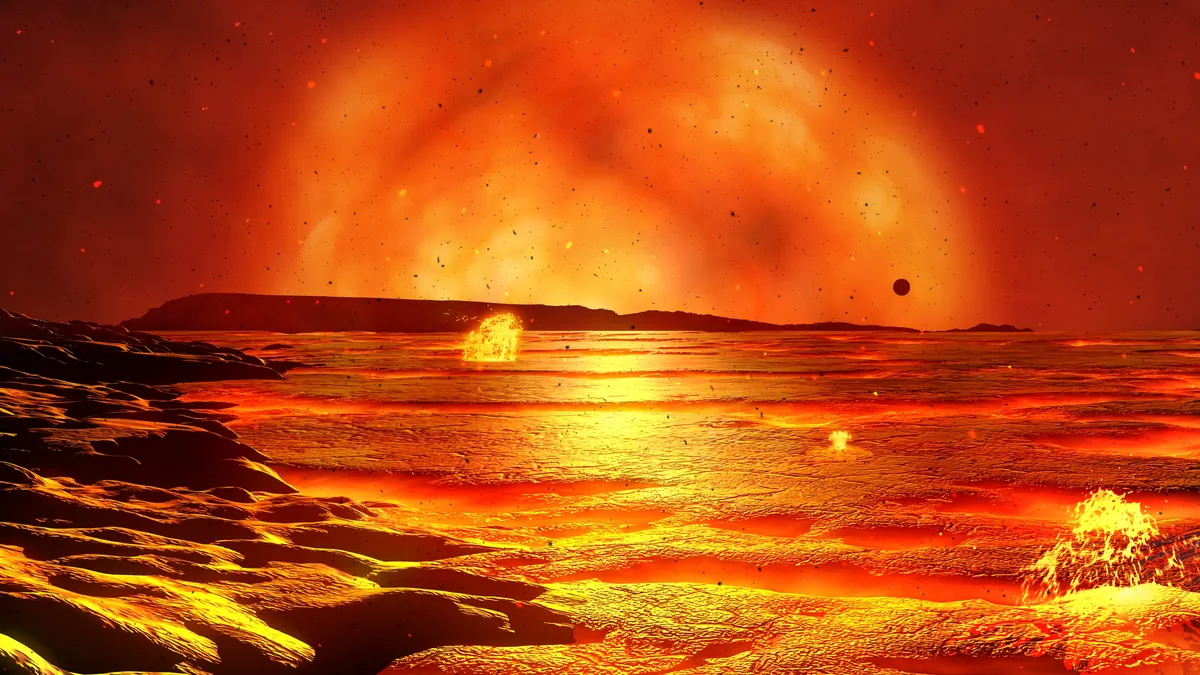
Imagining the end of the world has been a timeless tradition across cultures, with myths and stories warning of a day when our planet, Earth, will no longer exist. This grim yet captivating topic continues to generate headlines; for instance, last month, Elon Musk referenced the potential incineration of Earth to advocate for his vision of a multiplanetary civilization. Additionally, scientists have recently discovered an Earth-like planet that has managed to survive its star’s demise, sparking discussions about the long-term survival of our own planet in the distant future. However, despite various predictions, the exact fate of Earth remains uncertain.
We understand the basics of our planet’s future: the Sun, a main-sequence star, is slowly brightening and heating up, which will ultimately dehydrate Earth, rendering it uninhabitable in about two billion years. Following this phase, in approximately five to six billion years, the Sun will exhaust its hydrogen fuel and enter its red giant phase, expanding to over 100 times its current diameter. While Mercury and Venus are certain to be engulfed by the expanding Sun, Earth's fate remains ambiguous. It may either be swallowed completely or scorched into a lifeless husk. Unfortunately, the options are grim, and this remains a genuine scientific mystery.
Melinda Soares-Furtado, an assistant professor of physics and astronomy at the University of Wisconsin-Madison, emphasizes that the boundary between being engulfed by the Sun and remaining safe is incredibly small, only a few percent in distance. This closeness means that small uncertainties make it impossible to confidently predict Earth’s fate. In light of this uncertainty, turning to apocalyptic myths and literature for insights may be worthwhile. There exists a resonance between cultural expressions about the end of Earth and scientific predictions, suggesting that our planet may either become a frozen wasteland or be melted down in the stellar cauldron.
To delve deeper into these apocalyptic concepts, I consulted a group of scholars regarding the real and imagined fates of Earth, exploring their allegiances to either Team Fiery Sun Death or Team Lifeless Husk. Tim Burbery, a professor of English at Marshall University and an expert in geomythology, has spent years connecting stories to scientific realities. Interestingly, he notes that some mythologies do not anticipate an end to Earth at all. For example, Aristotle proposed that the universe is eternal, a notion that shaped cosmological thought until the advent of the Big Bang theory.
Helen Van Noorden, a fellow and college associate professor in classics at Girton College, University of Cambridge, supports Burbery's view. Many ancient philosophies, particularly before Christianity, did not expect a definitive end to the world, believing instead that the world was created to endure indefinitely. Yet, these early thinkers often discussed cataclysmic events in poetic and philosophical writings. Burbery shared various apocalyptic visions, such as the Zoroastrian apocalypse, where the Sun stands still for ten days while earthquakes shake the Earth, and the Talmud, which suggests that Earth will exist for 6,000 years before slipping into a thousand-year period of non-existence.
The Christian end times provide another dramatic narrative. For instance, Isaiah 65:17 speaks of the creation of new heavens and a new Earth, while 2 Peter 3:10 warns of the heavens passing away with a roar and the Earth being exposed after heavenly bodies are burned up. Isaiah leans towards the idea of a fiery end, while Peter seems to allow for the Earth’s survival, categorizing him on Team Lifeless Husk.
Van Noorden expresses no personal preference for Earth's fate but finds apocalyptic literature fascinating as a form of consolation. She highlights works like Seneca's Consolation to Marcia, which frames cosmic destruction through a Stoic lens, helping individuals cope with grief. This reflection on mortality resonates with Ricardo Yarza, a graduate student in astronomy at the University of California, Santa Cruz. He notes that humanity's historical views have been anthropocentric, and recent discoveries reveal that neither Earth nor the Sun holds a privileged position in the universe.
Despite the inevitability of change, Soares-Furtado points out that Earth has remained in the habitable zone for billions of years, fostering complex life over extensive time periods. No other planet in our solar system has had such a unique opportunity. Looking to the future, Burbery mentions that even the most cataclysmic apocalypses often lead to some form of rebirth. Concepts of reincarnation and renewal are embedded in many mythologies, suggesting that the remnants of our solar system could eventually contribute to the formation of new worlds.
As the Sun evolves and loses half of its mass, the material will be released into the cosmos, potentially leading to the formation of new planets. Soares-Furtado is particularly intrigued by the future possibilities of life that may emerge during and after the Sun's death. As the habitable zone shifts outward, moons like Europa may become prime candidates for supporting life, with the potential for transient surface oceans. Similarly, Saturn's moons, Titan and Enceladus, may eventually find themselves within the habitable zone.
Among the experts I consulted, only Burbery expressed a slight preference for Team Fiery Sun Death, envisioning a final, cathartic end. He suggests that a massive conflagration might serve as a purification, echoing sentiments found in Robert Frost's poem Fire and Ice. Conversely, a Twitter poll I conducted revealed a surprising preference for Team Lifeless Husk, indicating a strong attachment to Earth’s endurance, even in concept.
Whether one supports the idea of Earth as a scarred relic or envisions it going out in a blaze of glory, these distant outcomes reflect creative apocalyptic visions that date back to humanity’s earliest inquiries. Yarza poignantly notes that contemplating our planet's long-term future can be unsettling, yet regardless of what ultimately transpires, we are fortunate to experience and learn about Earth in the present. Such discoveries offer a form of catharsis, regardless of the specific fate awaiting our planet.